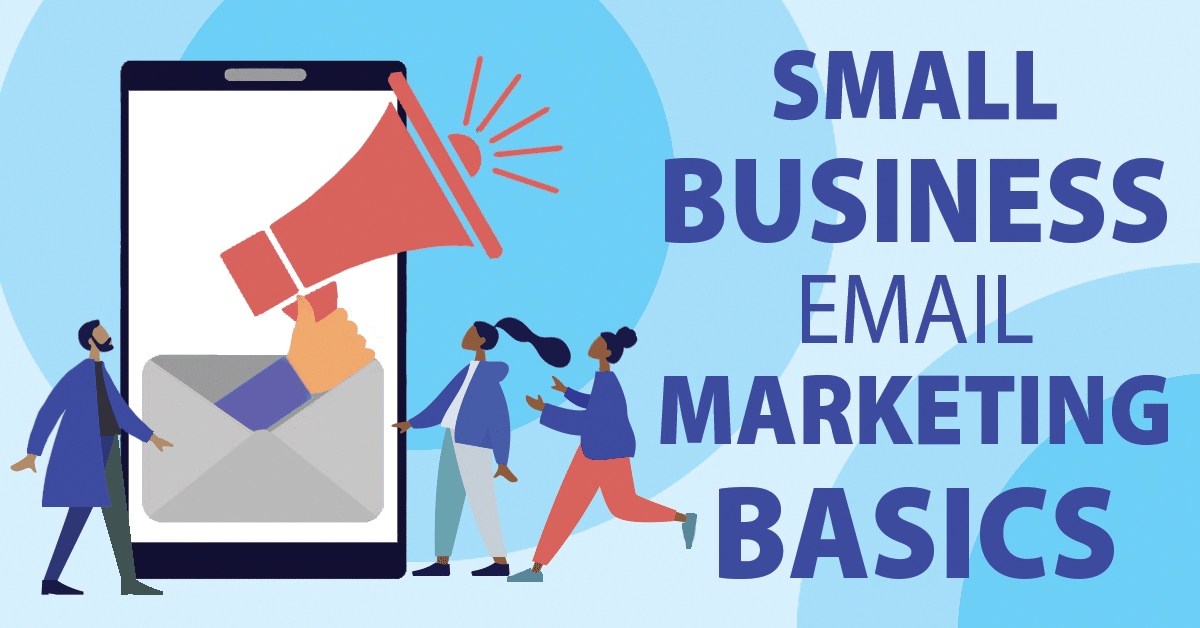Small Business Email Marketing Basics
You’ve spent a lot of money getting your website in shape, but for some reason, you’re not getting the traffic to your site or store that you want. How can you get customers to return and buy your new products or services?
Email marketing has been around for decades, and still has some of the best returns for your investment. We created this guide of email marketing basics for small businesses that need a refresher or want a great way to develop customer engagement.
Learn if you’re doing it right or if you want to do it at all. (We’re sure you will.)
Email Marketing Basics: Why Choose Email Marketing?
Email marketing is a science and an art. You create content for your customers and then analyze data to determine what works and what doesn’t. It’s well worth the time investment and can help SEO.
- Boost your brand awareness: There’s a lot of competition out there, so how do you keep yourself at the top of your customer’s minds? Regular emails say “Hello, remember me.”
- Build Customer Relationships: Today’s customers don’t want to be numbers on a spreadsheet. They want a personal experience. Welcome and other email types provide closeness and engagement.
- Create Leads: Do you have an e-book or white paper that is out of this world? Use it to entice people to offer up their email for this valuable information.
- Content Promotion: Blog posts, sales, coupon pages, and more need seen to be effective. Send info about them in your monthly newsletter or email campaign.
- Product Marketing: Do you have a new product or a special sale coming up? Email marketing is a perfect way to let customers know.
- Sales Funnel: People come to your site at the beginning, middle, and end of the sales funnel. Use email marketing to nurture those leads and move them forward.
Develop an Email Marketing Strategy
Before you grab your subscription to Mail Chimp or other platforms, you need to set your goals and develop a strategy. Every email is planned and designed for a specific goal. Who is your audience? Are you doing b2b email marketing or b2c email marketing?
Your customers get lots of emails every day from businesses, coworkers, and people who want to talk about their car’s warranty. Most of those emails get deleted or sent to the dreaded spam box. If you want to get noticed, then you need segmented email lists, proper data recording, and follow up.
A strategy involves goals, email campaigns, scheduling, and much more. Once you developed a proper plan, then you’re ready to start.
Developing and Expanding Your Email List
The lifeblood of your email campaigns is your email list. You could go out and purchase lists from various sellers, and that works for some, but organically gained emails improve conversions significantly.
How do you create an email list? You need to provide them opportunities to give it to you. The most common method involves sign-up pages on the website or as a pop-up when entering or exiting the site. People also offer email addresses to get useful information like white papers and eBooks.
Once you have a nice email list of several hundred people, you must segment them into various lists. You have your master list, but then you should segment them into lists that help reach your goals. You have a list of customers who purchased an item, or a list of potential leads you want to follow up with.
You can also create automated emails to welcome them after signing up and for signup anniversaries that offer a special deal. Your email lists help direct your promotional efforts. Don’t send all emails out to everyone because not all emails apply to them.
Working with Analytics and Data
You took the plunge and sent out your first email, now what? Give the emails a few days to get to where they’re going and give people time to open them. You want to check two sets of analytics: Email and Google Analytics.
The analytics tells you how well the email did. Important data to know includes:
- Open rate: This is how many people opened the email that you sent. If the number is low, then you need to reengage your existing lists and begin expanding them.
- Hard Bounce: If the email address is no longer valid, then it gets sent back to you. This is called a hard bounce. These emails should be removed from your list.
- Website Visits and Clicks: The goal is to get people to your website by either clicking a link in the email or directly typing it into the search bar. Your email client tells you how many people clicked on the various links and Google Analytics tells you how many people came directly from the search bar.
- Conversions: The goal of most campaigns is to increase conversions for various products and services. You can track how many people visited your site and then purchased an item, clicked to call, etc. Google Analytics helps you track much of this.
The Follow Up
It is inevitable that not everything works, so once you’ve analyzed the data, you must determine the pain points. Do you need more email addresses because of too many hard bounces? Do you need to spice up your landing page?
Make changes to your strategy based on the data, and you’ll create a bulletproof email marketing plan. If you don’t have the time or expertise, then you can choose an email marketing agency to help you out.
Don’t Lose Out on Customers and Choose Email Marketing
Email marketing basics help you get started, but your journey is only beginning. It can be difficult to learn the various programs, expand your email addresses and develop a sound strategy, but don’t let that discourage you.
Email marketing has some of the best ROI around and it’s vital to most businesses, so don’t miss out and start today. If you want to know about email marketing and what it can do for you, then contact one of our experts.
Email Marketing No To The Quo



